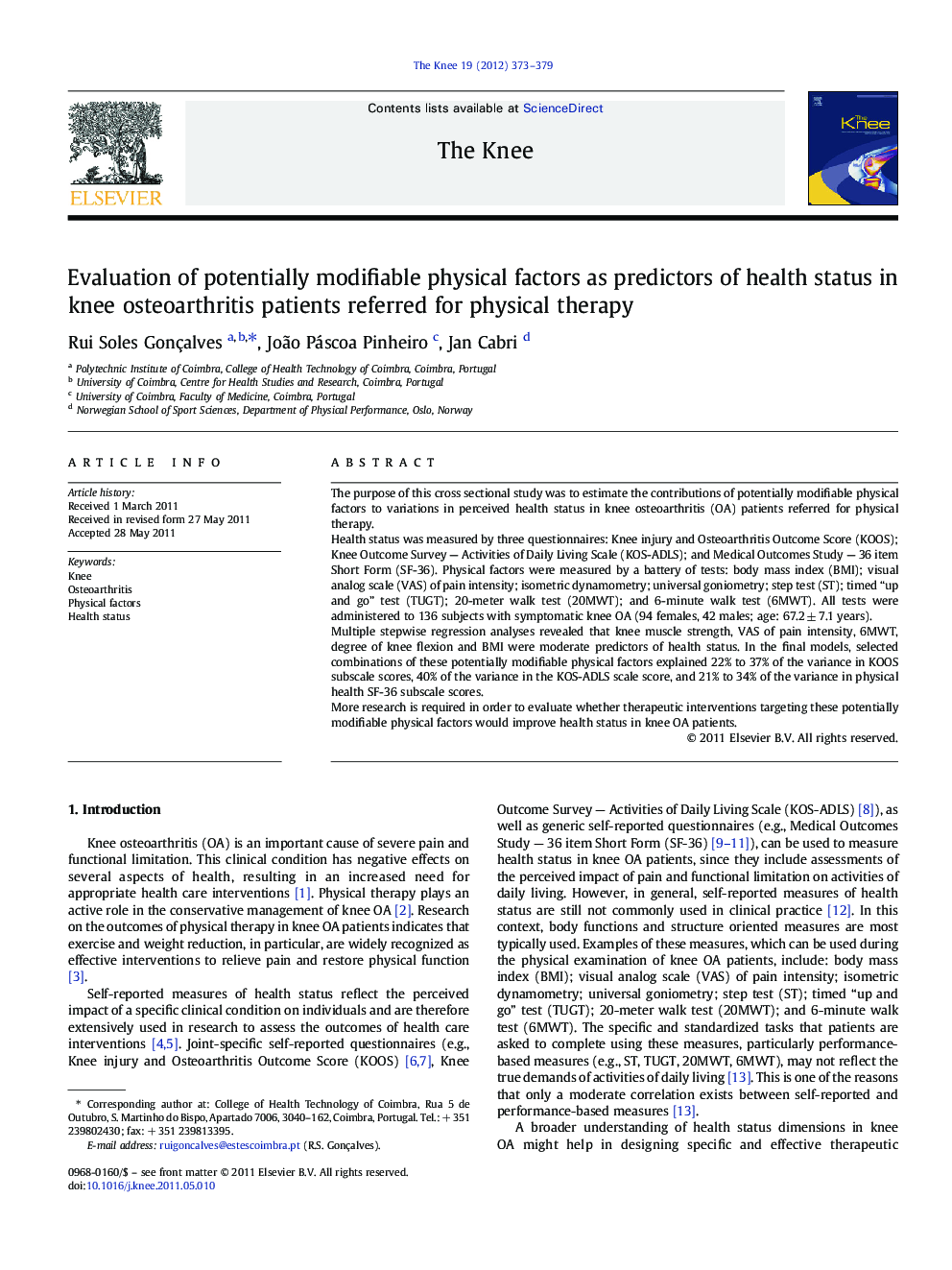| Article ID | Journal | Published Year | Pages | File Type |
|---|---|---|---|---|
| 6211467 | The Knee | 2012 | 7 Pages |
The purpose of this cross sectional study was to estimate the contributions of potentially modifiable physical factors to variations in perceived health status in knee osteoarthritis (OA) patients referred for physical therapy.Health status was measured by three questionnaires: Knee injury and Osteoarthritis Outcome Score (KOOS); Knee Outcome Survey - Activities of Daily Living Scale (KOS-ADLS); and Medical Outcomes Study - 36 item Short Form (SF-36). Physical factors were measured by a battery of tests: body mass index (BMI); visual analog scale (VAS) of pain intensity; isometric dynamometry; universal goniometry; step test (ST); timed “up and go” test (TUGT); 20-meter walk test (20MWT); and 6-minute walk test (6MWT). All tests were administered to 136 subjects with symptomatic knee OA (94 females, 42 males; age: 67.2 ± 7.1 years).Multiple stepwise regression analyses revealed that knee muscle strength, VAS of pain intensity, 6MWT, degree of knee flexion and BMI were moderate predictors of health status. In the final models, selected combinations of these potentially modifiable physical factors explained 22% to 37% of the variance in KOOS subscale scores, 40% of the variance in the KOS-ADLS scale score, and 21% to 34% of the variance in physical health SF-36 subscale scores.More research is required in order to evaluate whether therapeutic interventions targeting these potentially modifiable physical factors would improve health status in knee OA patients.
